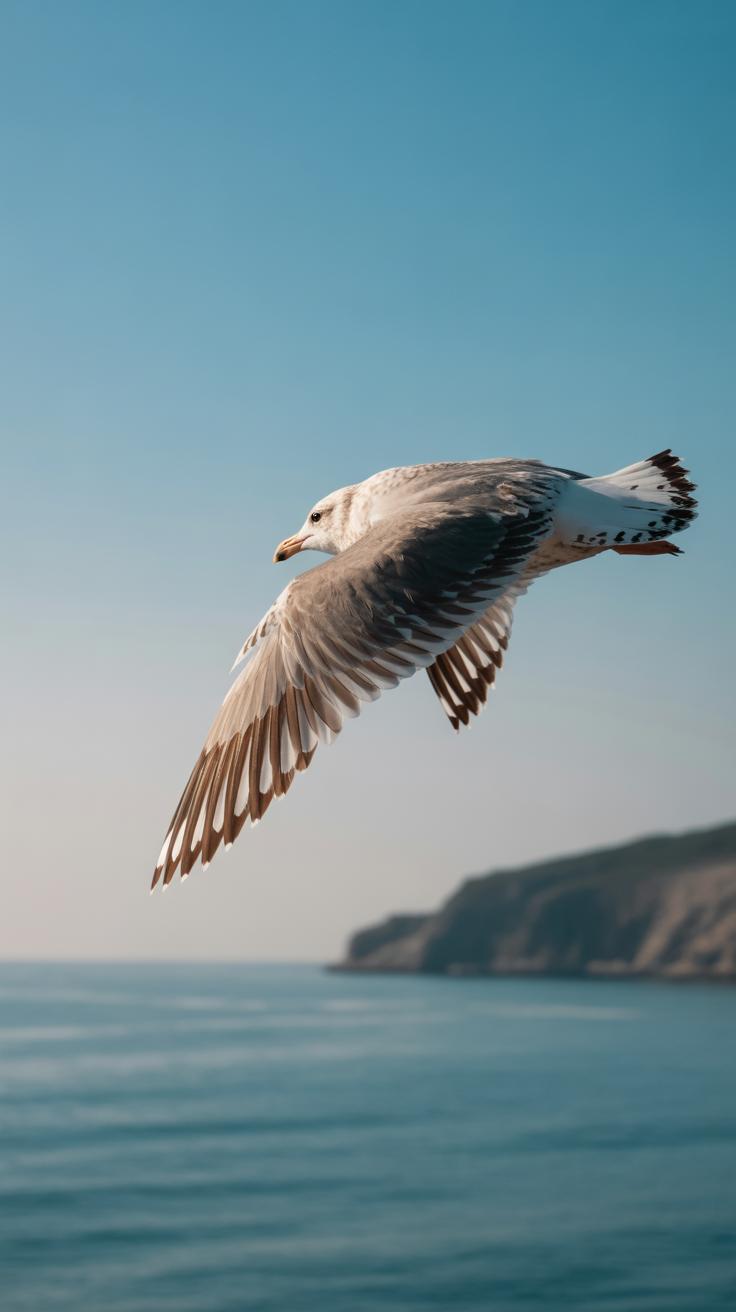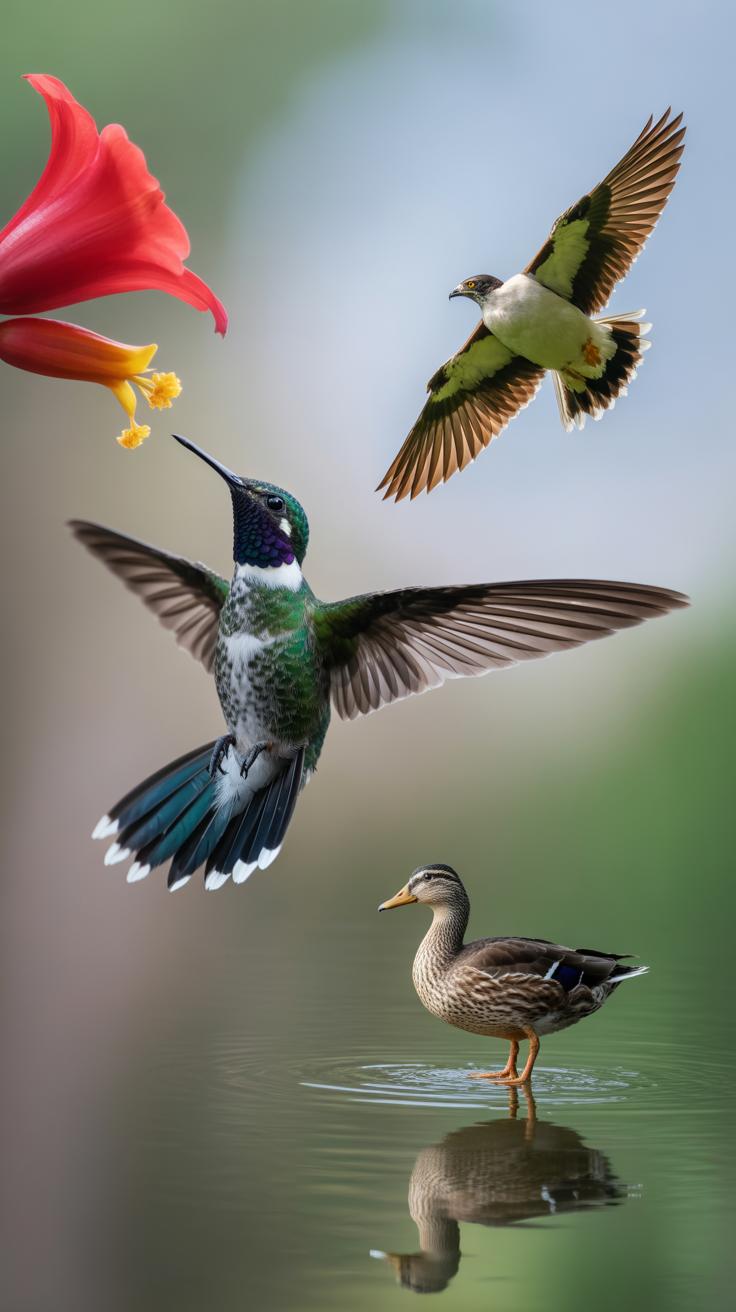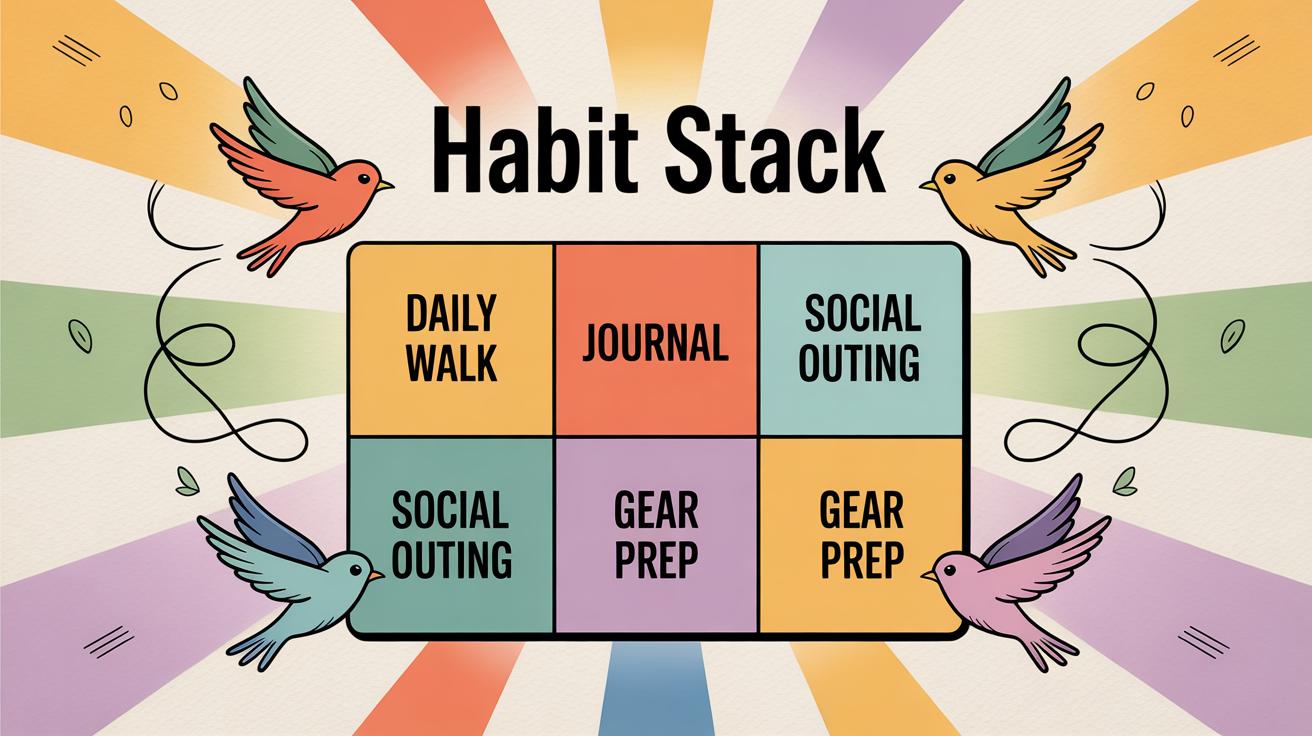Introduction
Birds in flight offer a captivating display of nature’s design and function. Watching their movement across the sky can inspire feelings of awe, a powerful emotion that can affect your mood. This article will take you through the fascinating science behind bird flight and how observing these winged creatures influences how you feel.
We will explore the mechanics of flight, different ways birds move through the air, and what makes seeing them soar so special for your mind and emotions. You’ll learn how the experience of awe connects with mood improvement and practical ways you can use this knowledge in your daily life.
Understanding The Basics Of Bird Flight
Lift Thrust And Drag Explained
Birds fly by balancing three main forces: lift, thrust, and drag. Lift is the force that pushes a bird upward, helping it stay off the ground. Think about when you stick your hand out the car window and tilt it slightly—your hand feels a push upward. That’s similar to how lift works for birds.
Thrust is what moves the bird forward. Birds get thrust by flapping their wings. Imagine yourself running and pumping your arms to go faster—that’s kind of like how birds use their wings to push through the air.
Drag is the air pushing against the bird, trying to slow it down, like when you walk against the wind. Birds try to reduce drag to fly smoothly. Their feathers and body shape help with this by making it easier to slip through the air.
How Bird Wings Work Like Airfoils
Bird wings aren’t just flat. They’re shaped kind of like airplane wings, curved on top and flatter underneath. This shape is called an airfoil. When a bird moves its wing, air travels faster over the curved top than underneath. This difference in speed creates lower pressure above the wing, lifting the bird up.
Wings don’t just sit still, either. Birds move them in a special way — flapping down to push air backward and up a bit to prepare for the next flap. It’s a smooth motion, almost like paddling through water. Watching birds flap their wings can feel so natural, as if they’re controlling the air itself.
Sometimes I wonder if birds even think about all this—maybe they just feel what works best and adjust without knowing why, much like we learn to ride a bike without thinking about physics. It’s curious how such simple forces come together to pull off something as complex as flying.
Types Of Bird Flight And How They Differ
Birds don’t all fly the same way. Their flight styles vary quite a bit, depending on what they need—for food, escape, or long-distance travel. Three main types usually come up: gliding, flapping, and bounding. Each involves different wing movements and energy uses.
Gliding Flight And Soaring
Gliding flight is like coasting on air. Birds spread their wings wide and catch air currents, letting gravity and wind keep them moving forward without much effort. Soaring pushes this further. Birds—like hawks or vultures—circle in rising thermal currents to gain height without flapping. This saves their energy, which is smart for predators scanning a big area. You might notice them effortlessly riding the thermals, almost floating, which is a bit mesmerizing if you stop to watch.
Flapping And Bounding Flight Styles
Flapping is what most people imagine when thinking of flying birds: constant wing beats that provide thrust. Birds like pigeons or crows flap to move quickly or maneuver through tight spots. Bounding flight is a little different. Birds alternate between flapping bursts and brief folding of wings, letting themselves fall slightly before the next flap. Woodpeckers and finches often do this. It may seem less smooth, perhaps even jerky at times, but it actually helps them conserve stamina during short bursts of speed.
Each flight style reflects a balancing act between energy use and movement needs. It’s fascinating how these patterns form almost instinctively, shaped by a bird’s lifestyle and environment.
The Evolutionary Adaptations Behind Flight
Evolution Of Wings And Flight Muscles
Bird wings didn’t appear out of nowhere. Over millions of years, their ancestors slowly developed structures that supported flight. The bones became lighter but stronger, hollowed out to reduce weight but still hold shape. Wing shape changed, too—some became broad and rounded, perfect for quick bursts in forests, while others grew long and narrow for soaring over open skies.
Muscle changes are just as important. The pectoral muscles, responsible for flapping, grew larger and more powerful. These muscles allow continuous wing beats or sudden flaps to lift off. Interestingly, flight muscles use oxygen really fast, keeping the bird aloft without tiring quickly, though it isn’t always easy for them.
Survival Advantages Of Flight
Flight gives birds options—some that seem obvious, others more subtle. Escaping predators is an obvious one. When threatened, a bird can quickly take off, making catching them a challenge. For feeding, flying expands what’s reachable. Some birds dive into water mid-air; others hover to grab insects on the wing.
Migration is another fascinating use. Flying allows birds to travel thousands of miles between breeding and wintering grounds. This ability to relocate seasonally helps avoid harsh weather and find food, increasing their chances of survival. Watching them navigate across continents is, I think, quite astonishing when you consider how fragile that journey can be.
Why Watching Birds In Flight Feels AweInspiring
What Is Awe And How Does It Work?
Awe is more than just admiration or surprise. It’s that odd mix of wonder and smallness you feel when faced with something vast or powerful. Your brain notices something out of the ordinary—something bigger than everyday experience—and shifts your focus away from yourself. You might feel a sudden hush inside, a pause as your mind tries to grasp what’s unfolding.
Neuroscience points to changes in brain activity that reduce the sense of self, while boosting attention and curiosity. The brain triggers a wave of chemicals that heighten awareness and deepen your emotional response. This mix pulls you in, makes moments feel stretched out, sometimes even a little overwhelming.
Yet awe isn’t just about big natural phenomena. It’s about encountering something that challenges your usual frame of reference, pushing you to rethink, or to just stop and absorb what’s in front of you. That shift, subtle as it may be, can leave a lasting impression.
Birds In Flight As A Source Of Awe
Watching birds in flight often triggers this awe because it confronts us with grace and freedom—things we appreciate but don’t experience firsthand. There’s something captivating about their effortless movement through the sky, their wings tracing shapes we rarely notice until we look closely.
Birds defy gravity without machines, which seems almost impossible. Their flight feels unpredictable yet deliberate, stirring a tension between control and wildness. When you see a flock shifting patterns or a single bird gliding with no visible effort, it grabs your attention because it’s so unlike our everyday lives.
Maybe you’ve caught yourself watching birds soar and felt a sudden calm or even a strange lift in your spirits. That’s the awe response at work. It makes you pause and notice something simple but profound. And the sky, vast and open, adds to this. Seeing movement there reminds you of possibilities beyond your usual bounds, even if just for a moment.
The Link Between Awe And Mood Improvement
Feeling awe can shift your mood in a way that almost feels like a reset. When you witness something larger than yourself—say, a flock of birds sweeping across the sky—it can momentarily quiet your usual worries. That sense of vastness or wonder nudges your brain toward positive states. There’s science backing this. Awe triggers a kind of emotional expansion that reduces focus on everyday stress and lifts sadness or irritation.
Think about the last time you saw birds in flight. Maybe, like me, you found yourself holding your breath, paused in the moment. That pause can help your brain create new perspectives. It’s as if awe thins your usual mental chatter, making space for calm or even joy. Some studies suggest this happens because your brain starts releasing mood-enhancing chemicals, which gently steer your feelings away from negativity.
How Awe Influences Brain Chemistry
Awe has a subtle but real impact on brain chemicals. When you experience awe, your brain boosts dopamine, the chemical linked to pleasure and motivation. This can make you feel more alert and engaged, even mildly euphoric. Serotonin, another key player in mood regulation, also appears to rise, helping to stabilize your emotions and bring calm.
There’s also a drop in pro-inflammatory cytokines, which are linked to stress and depression. This is quietly fascinating because it means awe might reduce physical signs of stress in your body, not just your mind. The interplay between these chemicals doesn’t feel overwhelming or artificial. Instead, it’s a natural shift that restores a bit of balance and lifts your mood without you needing to do much.
Real Life Benefits Of Experiencing Awe
Experiencing awe regularly offers several practical benefits for your mood and mental health:
- Reduced stress and anxiety—as awe shifts your focus, it lowers the worry cycle.
- Increased feelings of connectedness, both to nature and other people.
- Improved patience and generosity, as awe can soften harsh judgments.
- A natural boost to creativity and problem-solving by expanding your thinking.
- Temporary relief from symptoms of depression through mood elevation.
It might sound a bit abstract until you notice it in yourself. Maybe after watching birds fly, you feel lighter, less trapped by your routine. Or you find it easier to be kind to others that day. These small ripple effects show how watching birds in flight sparks more than just fleeting wonder—it can gently nudge your mood in a healthier direction over time.
How To Use Bird Watching To Boost Your Mood
Simple Bird Watching Tips For Beginners
If you’re new to bird watching, you don’t need fancy gear or expert knowledge. Just start by finding a quiet spot outdoors—this could be a park, your backyard, or even a window where birds tend to visit. Bring a pair of binoculars if you have them, but don’t worry if not; the naked eye often works fine, especially for larger or colorful birds.
Try to be patient. Birds won’t always appear on cue, and that’s part of the experience. Sometimes, just sitting still and observing the environment helps you notice subtle movements—a flicker of wings or a soft chirp. Keep a simple notebook or use your phone to jot down the birds you see. It’s surprisingly satisfying to track your progress.
Don’t stress about identifying every bird right away. Apps or simple field guides can help, but it’s okay to just enjoy the shapes, colors, and behaviors for now. Watching birds is about slowing down and paying attention, even if you don’t catch every detail.
Creating Moments Of Awe Daily
Making bird watching a habit doesn’t require a lot of time. Even five or ten minutes a day can create a meaningful pause in your routine. Try stepping outside during a break, or open a window and listen for birdsong. Sometimes, just glancing up and watching birds in flight can shift your mood unexpectedly.
You might find that certain times of day offer more activity—early morning or late afternoon often bring interesting behaviors like feeding or soaring. Repeating these small moments helps tune your awareness and makes the awe feel more accessible.
Also, try to notice small details—the way feathers catch the light, the precision in flight patterns, or how flocks move together. These glimpses are what spark that lift in mood. Watching a bird’s effortless flight might remind you of something bigger or slower beyond daily concerns. So, keep it simple and just watch. You might be surprised at how often awe can sneak in.
Other Ways Nature Inspires Awe And Mood Change
Natural Wonders Beyond Birds
Of course, birds aren’t the only natural scene that can make you pause in awe. Think about the steady rise and fall of ocean waves, the way sunlight filters through tall trees, or the sudden appearance of a rainbow after a rainstorm. These moments can stop you mid-thought—almost like your brain shimmers for a second. Sometimes it’s even something small, like a spider weaving its intricate web, perfectly crafted yet so fragile.
There’s also geological or celestial sights: shifting clouds forming strange shapes, mountain peaks piercing the sky, or the slow dance of stars on a clear night. Each offers a distinct kind of awe, different from watching birds but no less moving. They invite you to look outward and up, stretching your sense of time and place beyond everyday concerns.
Mood Benefits From Connecting With Nature
Spending time in natural settings triggers mood lifts that go beyond simple distraction. Awe tends to quiet the noise inside—those swirling worries and overthinking tendencies—by focusing your attention on something bigger. Nature’s vastness or intricacy reminds you that there’s more to existence than your current struggle.
Studies suggest that these experiences decrease stress hormones, lower blood pressure, and boost feelings of connectedness. You might notice feeling calmer, more grounded, or even quietly energized after a walk through a forest or watching a sunset. The mood changes aren’t fleeting; they can stick with you, subtly shifting how you perceive your day.
Maybe it’s not just the spectacular but the familiar too—the rustling leaves, a babbling stream—which can restore your mind, offering a break from intensity. That gentle, often overlooked beauty can still spark awe, albeit in a softer way. Honestly, the exact scene matters less than the openness to experience it.
Incorporating Awe Into Your Everyday Life
Noticing awe-inspiring moments, especially when watching birds in flight, takes a little practice. It’s rarely automatic. You might find yourself distracted, rushing past a scene that could shift your mood if you paused for just a few seconds. But what if you trained yourself to catch those small bursts of wonder throughout the day?
Try starting with simple awareness exercises. For instance, when you’re outside, spend a minute or two observing the sky. Watch a flock of birds or a single bird weaving through the air. Ask yourself what’s unusual or captivating about their movement—maybe the way the light catches their wings, or the rhythm of their flight. These details can pull you into the moment more deeply than you expect.
Making this a habit means building a sort of mental readiness to spot awe when it appears. You could:
- Set reminders to look up and around during breaks, even if just for a few breaths.
- Keep a mental note of your reactions to bird flight — does it calm you, surprise you, or maybe spark curiosity?
- Practice describing what you see or feel to yourself; the act of naming awe sharpens your attention.
Over time, these little observations aren’t just fleeting; they become tools you can reach for when you need a mood boost. That quick pause to watch birds soaring can reset a frazzled mind or lift a down moment. The challenge is in making these pauses intentional. Try to remember the feeling you get, so you can invite that feeling on command—almost like a quiet escape you carry in your mind.
It’s not about transforming every moment into grandeur, but about gently tuning your senses to something out of the ordinary, accessible even in the most routine days.
Conclusions
Birds in flight show an impressive blend of biology and physics that enables them to move with grace and function. You have seen how they create lift, thrust, and reduce drag to fly, using techniques like gliding, flapping, and bounding. This natural skill also acts as a trigger for feelings of awe.
Experiencing awe from watching birds can help shift your mood toward positivity. It can increase your sense of connection to the world and reduce stress. Taking time to observe birds in flight offers not only a moment of beauty but a practical way to support your mental well-being. You can apply what you’ve learned today next time you see a bird soaring above.


